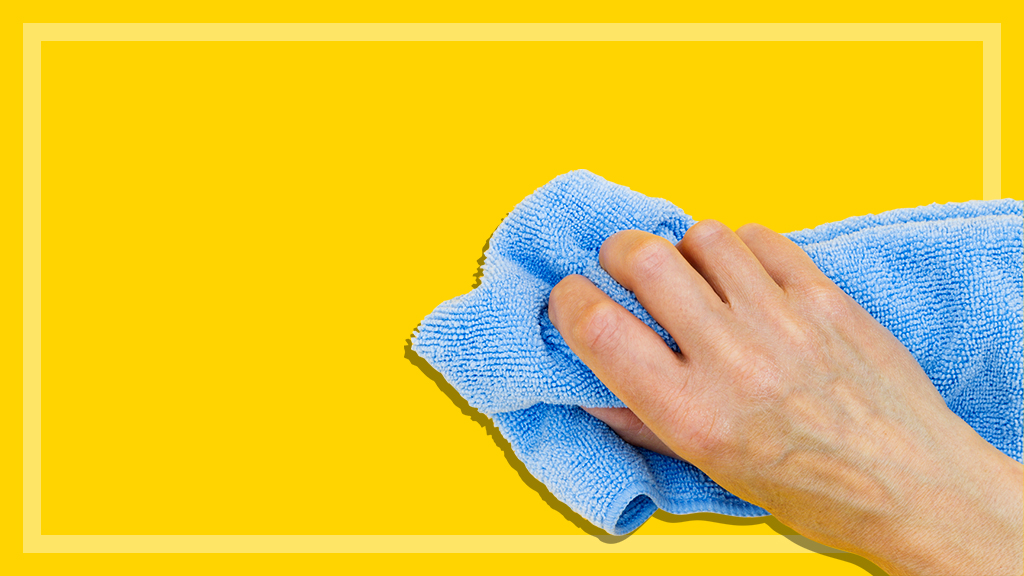Get our independent lab tests, expert reviews and honest advice.
Cleaning in the time of coronavirus
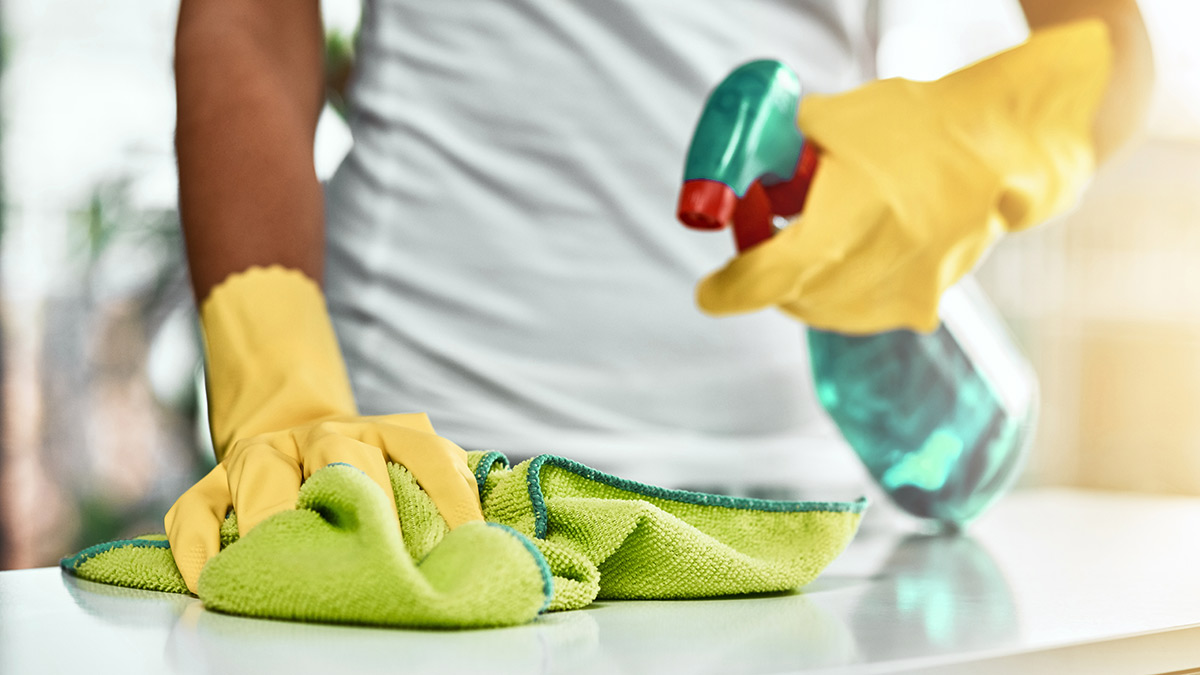
Need to know
- Some studies have shown that the COVID-19 coronavirus can survive for up to 72 hours on plastic and stainless steel
- But there are no confirmed cases of COVID-19 being transmitted through food or food packaging, and the risk of catching the virus from a posted parcel is low
- Cleaning is a two-step process: clean surfaces to remove dirt, then apply disinfectant to kill the virus
We’re all now very aware of the personal precautionary measures we need to put in place to help limit the spread of COVID-19.
As well as physical distancing and good hygiene, such as regular hand-washing with soap and water and not touching your face, it’s also important to clean and disinfect surfaces around the home thoroughly to remove the virus and limit its spread.
Difference between cleaning and disinfecting
The best plan of action is first to clean surfaces by removing the dirt, using an all-purpose cleaner, and then apply disinfectant to get rid of the virus (the first step makes the virus easier to remove in the second step).
Step one: cleaning
‘Cleaning’ refers to the removal of germs, dirt and impurities from surfaces (it doesn’t kill germs but can reduce them and reduce the risk of spreading an infection).
Step two: disinfecting
‘Disinfecting’ refers to using chemicals to kill germs on surfaces. This process does not necessarily clean dirty surfaces or remove germs, which is why it’s important to clean first.
If no-one in your immediate household has tested positive for COVID-19, you don’t need to clean obsessively to remove germs (over and above your usual everyday cleaning).
But you may want to clean and disinfect after visitors, or in high-traffic areas or communal outdoor areas that others may have visited – and especially high-contact areas such as doorknobs and handles.
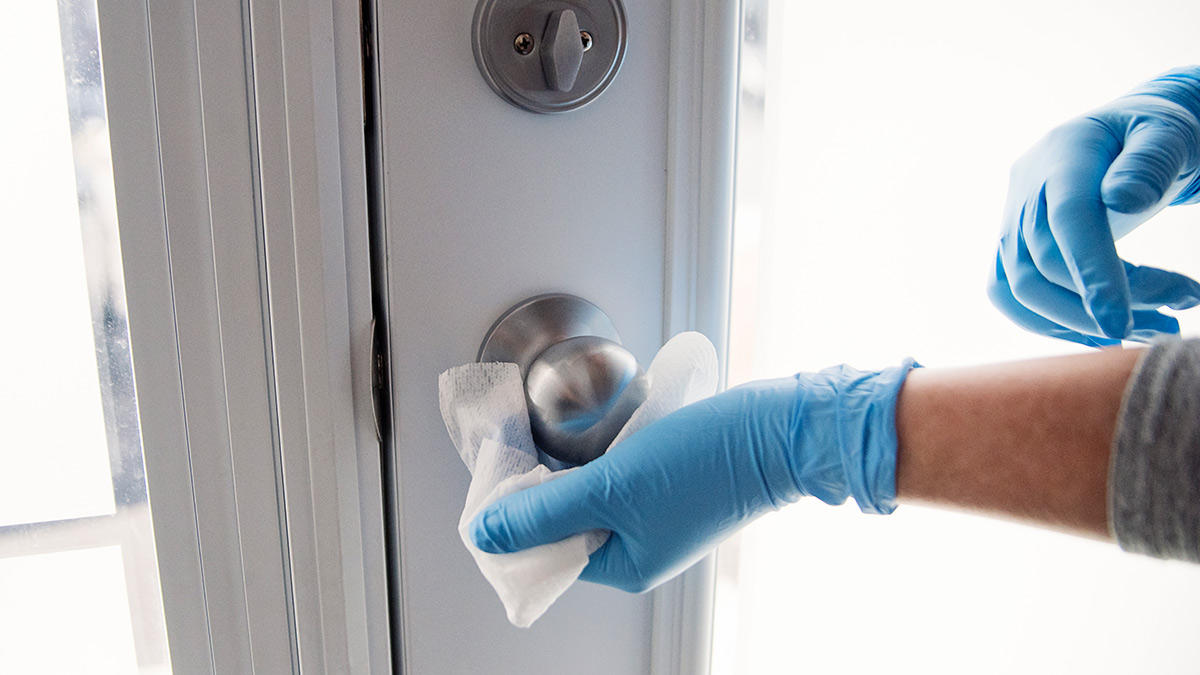
Cleaning products and disinfectants you should use against coronavirus
Cleaning products
There’s a good chance you already have all the cleaning products you need in the cupboard. Your everyday cleaning methods and supplies, applied with diligent scrubbing, will help reduce the risk of spreading the virus.
The important thing is first to clean with a detergent and water, then follow up with a disinfectant suitable for killing viruses.
Disinfectants
The Australian Department of Health says you should use a disinfectant that claims ‘antiviral activity’, meaning it can kill a virus.
This is different from an ‘antibacterial cleaner’. Antibacterial cleaning products contain ingredients to eliminate germs and bacteria such as E. coli and salmonella. While you can still use these products to clean surfaces, the ‘antibacterial’ ingredients themselves will not eliminate coronavirus. (Some products that market themselves as being ‘antibacterial’ are also disinfectants – but not all. So check the label to ensure the product kills viruses as well.)
The Australian Department of Health says you should use a disinfectant that claims ‘antiviral activity’
General sanitisers and cleaners that make claims such as ‘antibacterial’ do not have to be regulated or approved by the Therapeutic Goods Administration (TGA). But disinfectants do, so these products will list the ingredients they contain.
Studies show that disinfectant products containing at least 62–71% ethanol, 0.5% accelerated hydrogen peroxide or 0.1% sodium hypochlorite can remove a virus within one minute. But to ensure the product you are using is effective, follow the manufacturer’s instructions and, generally, make sure it has contact with the surface for at least 5–10 minutes to ensure it kills any viruses.
Look for products that contain:
- Alcohol (at least 70%)
- Chlorine bleach (0.1% solution)
- Oxygen bleach
- Quaternary ammonium compounds
If you don’t have a disinfectant to hand, you can also use diluted household bleach solutions for disinfecting. But you should never mix cleaning chemicals and detergents, or chemical-based products with natural-based chemicals such as vinegar-based detergents.
Using bleach as a disinfectant to kill coronavirus
You can use bleach as a disinfectant. But it can be tricky to get the concentration right, and bleach can be dangerous to handle. It’s also not suitable for all surfaces, so check before you use it.
If you choose to use bleach, you need to mix it in a solution of 1000 parts per million (0.1%) of bleach to water. Make sure you always pour the bleach into the water (not the other way around), wear gloves and protective eyewear, and make sure you’re in a well-ventilated area.
The amount of bleach you need to add depends on the strength of the undiluted bleach, so follow the instructions on the pack. For instance, if you’re using a 1% strength bleach and want to make a 0.1% solution, you’ll need to use 100mL of bleach per litre of water.
Bear in mind that bleach loses effectiveness over time and by exposure to sunlight, so check that the product isn’t past its expiration date.
Using cleaning wipes against COVID-19
You can use wipes to clean surfaces. But make sure you put the same level of elbow grease into the clean as you would using a cloth and standard spray product. And unless the product is a disinfectant that kills viruses, you’ll need to use a disinfectant product after you clean.
Can you use ‘natural’ cleaning products, such as vinegar, against coronavirus?
Some natural cleaning alternatives, such as vinegar, have been shown to be useful disinfectants. In the case of vinegar, its acidic properties can fight viruses and bacteria. Generally, though, natural cleaning products are not as effective as commercial cleaners and disinfectants. Most natural or ‘eco cleaners’ are unlikely to kill coronavirus.
Don’t clean a surface with vinegar then follow up with a bleach-based disinfectant, as it can create a toxic gas
The manufacturers of the popular toxin-free ‘eco-friendly’ Koh Universal Cleaner, for example, say: “Although Koh Universal Cleaner has proven effective against a common class of bacteria (campylobacter, salmonella and E. coli), it is not a sanitiser or disinfectant, which means it will not kill viruses such as COVID-19.”
If you do decide to use natural cleaning products, it’s important that you do not mix these with bleach or other chemical products. For example, don’t clean a surface with vinegar then follow up with a bleach-based disinfectant, as it can create a toxic gas.

How do I clean my remote control and keyboards to protect against coronavirus?
It’s a good idea to clean all high-touch surfaces such as remote controls for all your devices around the home, as well as computer keyboards. They can get pretty filthy, so give them a once-over during your cleaning routine to help limit the spread of any virus or germs.
US consumer organisation Consumer Reports, advises: wipe, don’t spray. Again, to ensure you are disinfecting the remote rather than just cleaning it, use either a household bleach solution or an alcohol-based solution with at least 70% isopropyl alcohol.
Computer keyboards can get pretty filthy, so give them a once-over during your cleaning routine
Always remember to remove the batteries, then turn upside-down and shake to dislodge any particles. Then, apply a disinfectant – don’t spray any solution directly onto the device, though. Instead, moisten a cloth, wipe or paper towel with your cleaning solution and gently clean the remote or keyboard.
To get to the harder-to-reach areas, such as around the keys, use a cotton bud moistened with solution. Leave to air-dry before replacing the batteries.
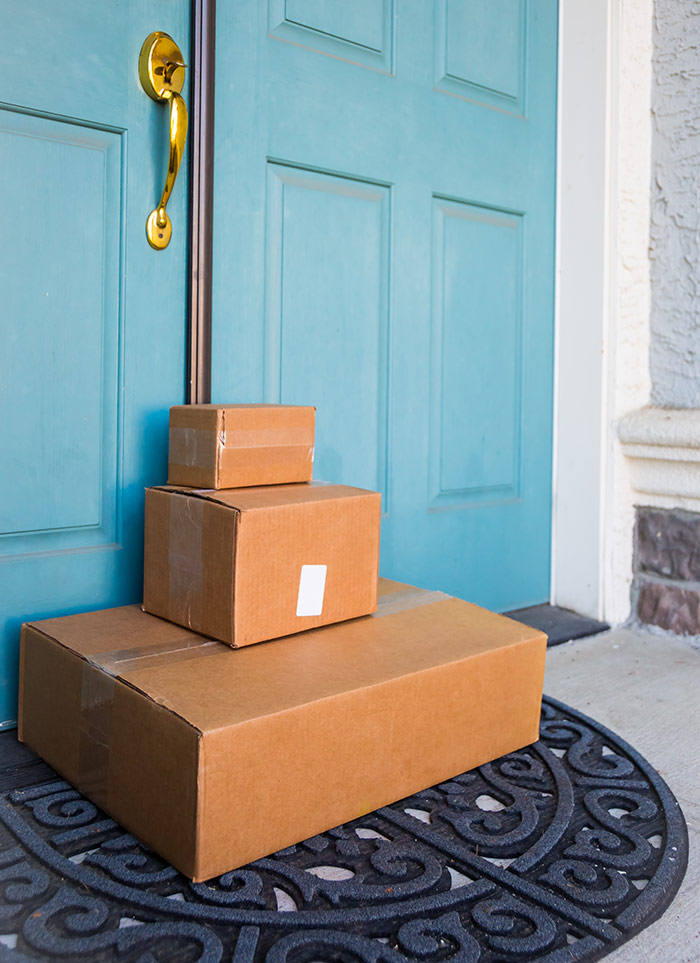
Surfaces the virus lives on
Because this is a new strain of coronavirus, it is not yet clear exactly how long it lives on surfaces, although the World Health Organization (WHO) says there are no confirmed cases of it being transmitted through food or food packaging.
Studies have shown that the virus can survive for up to 72 hours on plastic and stainless steel, and less than 24 hours on cardboard. If you think a surface may be contaminated, ensure you clean and disinfect it while wearing gloves.
If you’re worried about the virus living on food packaging, there are four points at which you should wash your hands:
- After you touch the packaging
- After you take the food out of the packaging
- Before you prepare food
- Before you eat.
Online shopping: safely receiving parcels and packages
Although the virus is thought to last longer on hard surfaces such as plastic or steel than on cardboard or paper items, if you’re receiving packages from an online delivery person or postie, they’ll generally leave the parcel at the door.
Australia Post has enabled contactless delivery for parcels and for parcels that usually require a signature on delivery – the delivery driver will just record your name and record delivery if you’re home.
WHO says the risk of catching coronavirus from a package that has been through the postal system is low
WHO says the risk of catching the virus from a package that has been through the postal system (or handled and exposed to different conditions and temperatures) is low.
If you’re receiving a parcel for online delivery that may have had a shorter transit time, either avoid touching it or bringing it into your home for 24 hours, or open it with gloves and dispose of the gloves and packaging immediately.
If the parcel is wrapped in plastic, you could disinfect it before opening.
Will air purifiers work to eradicate the virus in your home?
CHOICE home expert Chris Barnes says the short answer is yes – but only to a limited degree.
“Many air purifiers actually are capable of trapping and even killing viruses, but they can only be expected to trap a small percentage of germs in the air in a typical home,” says Chris.
“The virus actually has to pass through the appliance for it to be effective, which may not happen if someone sneezes or coughs somewhere in your home – the droplets aren’t all going to land in the air purifier.
“It’s therefore far more important that you simply keep up the usual hygiene practices: washing your hands, cleaning hard surfaces, and of course trying to avoid bringing germs into your home in the first place.”
Best way to dispose of gloves after cleaning
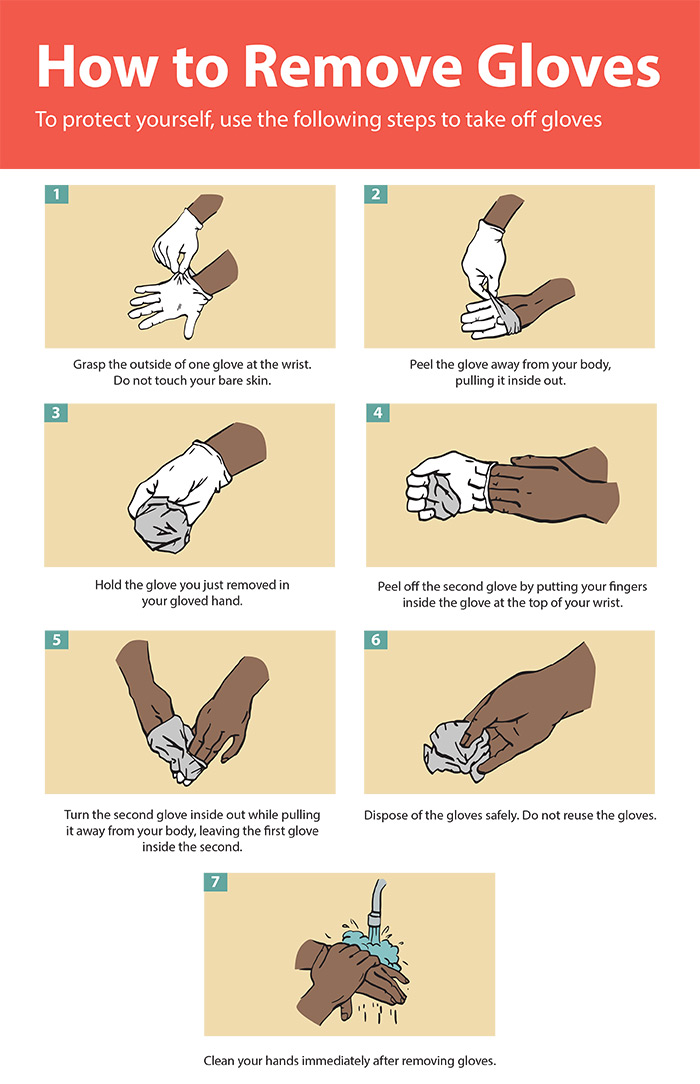
Other useful links
For more information on cleaning and hygiene in relation to COVID-19, we encourage you to check out the following links:

